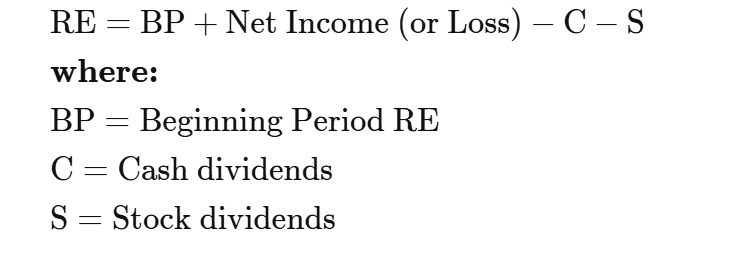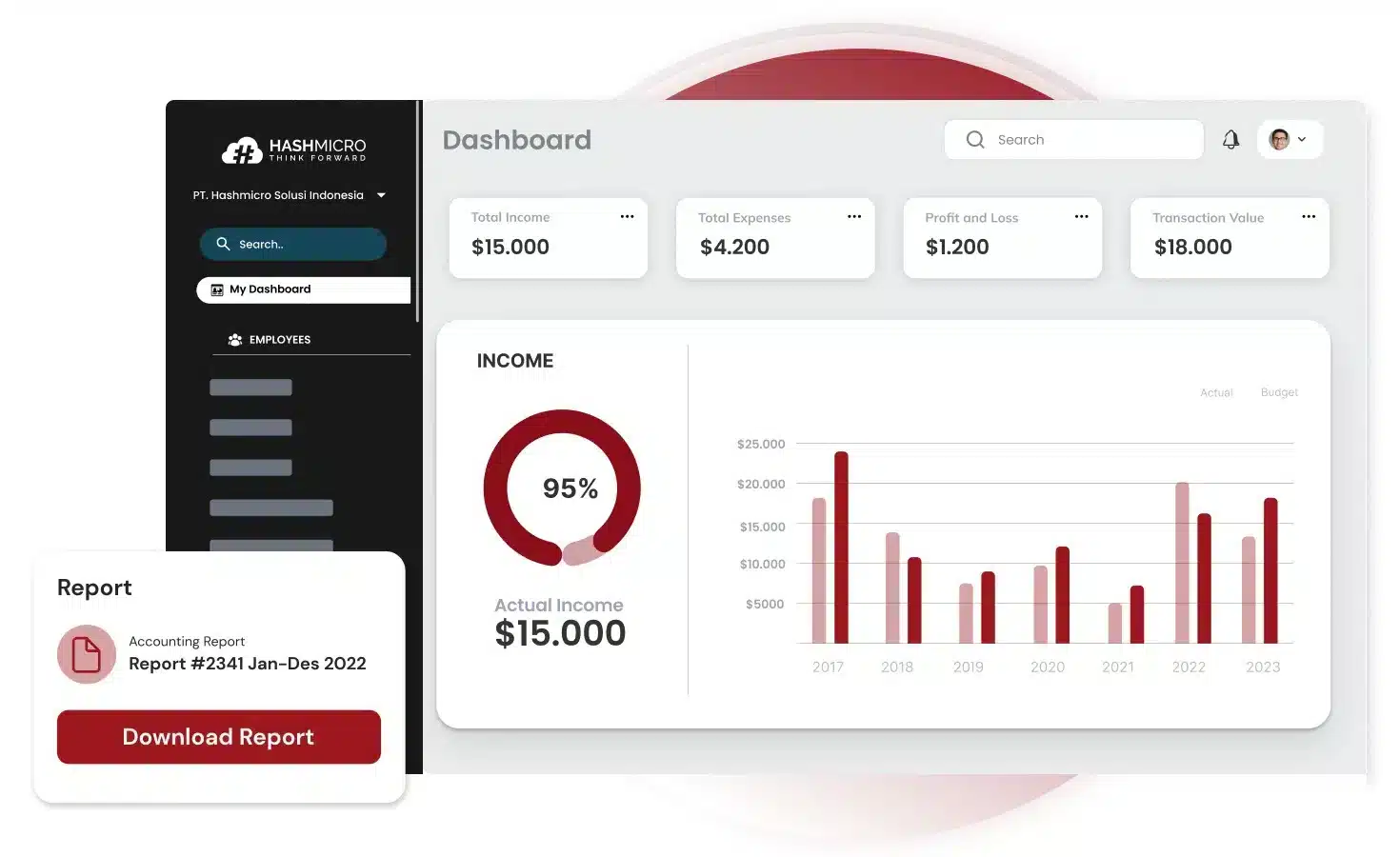Retained earnings are the profits a company keeps after paying dividends. As such, these earnings need to be managed properly. Otherwise, the company may risk losing shareholder values or safety nets when emergencies arise.
Additionally, recent data shows that approximately 29% of businesses now use automated accounts payable systems to simplify financial processes, including calculating retained earnings, by relying on precise and reliable data management.
With automation on the rise, tools like HashMicro’s Accounting Software are transforming financial management. These tools help with automating tedious processes, such as profit tracking and financial reporting, thus helping businesses’ financial situation to be healthy.
This article discusses what retained earnings are, why they matter, and how to optimize your financial strategies.
Key Takeaways
|
Table of Content
Content Lists

What are Retained Earnings?
Retained Earnings (RE) represent the portion of a company’s profits that are kept within the business rather than distributed to shareholders as dividends. These funds are typically used for reinvestment purposes, such as working capital, purchasing fixed assets (capital expenditures), or repaying debts.
RE is recorded on the balance sheet under the shareholder’s equity section at the close of each accounting period. It is calculated by adding the starting balance of RE to the net income (or deducting a net loss) and then subtracting any dividend payments.
Additionally, a statement of retained earnings is prepared to summarize the changes in RE over a specific period.
The Purpose of Retained Earnings
Retained earnings connect the income statement to the balance sheet, as they are listed under shareholders’ equity. Companies keep these earnings to fund things like buying new equipment, investing in research, or supporting other activities to help the business grow and earn more in the future.
If the company thinks it won’t get a good return on these accumulated earnings (meaning it won’t make enough profit to cover the cost), it might instead give the money to shareholders as dividends or buy back shares.
The income can be used in several ways:
- It may be distributed, fully or partially, to shareholders as dividends.
- It can be reinvested to grow the business, such as increasing production capacity or hiring more sales staff.
- The funds can support launching new products or variants, like a refrigerator company starting to produce air conditioners or a cookie manufacturer introducing new flavors like orange or pineapple.
- The money might be allocated to mergers, acquisitions, or partnerships that enhance business opportunities.
- It can also fund share buybacks.
- A small sum of the earnings can be allocated to a petty cash fund, for emergencies or last-minute purchases.
- Additionally, the earnings can be used to pay off any outstanding debt the company owes.
These funds are typically used for reinvestment purposes, such as working capital, purchasing fixed assets, or repaying debts.
For industries like construction, where financial planning and resource allocation are complex, using construction accounting software can simplify tracking and managing the reinvestment effectively.
What Can Retained Earnings Tell You?

Retained earnings, also known as earnings surplus, refer to reserve funds available for the company’s management to reinvest in the business. When calculated as a percentage of total earnings, it is referred to as the retention ratio, which is determined using the formula: (1 – dividend payout ratio).
While using retained earnings to repay debt also removes money from the business, it still impacts the company’s accounts by, for example, reducing future interest expenses, which justifies its inclusion in retained earnings.
Profits provide flexibility for business owners or management to decide how to utilize surplus funds. While a portion of the profit is often distributed to shareholders, the rest can be reinvested into the company to support growth.
How are Retained Earnings Analyzed?
Banks typically prioritize retained earnings when evaluating a company for a loan.
To gauge risk, banks examine the company’s debt-to-equity ratio. Typically, they are willing to lend three to four times the company’s equity, with retained earnings playing a significant role in this calculation.
For instance, if a company has $400,000 in retained earnings, it could potentially secure additional borrowing capacity of $1.2 to $1.6 million, which promotes faster growth.
However, business owners cannot withdraw $500,000 as dividends and then expect to borrow $1 million from the bank. To qualify for a loan, it’s crucial to keep sufficient funds within the business to minimize the bank’s perceived risk.
As an entrepreneur, you must balance growth aspirations with financial responsibility, you can’t have it all. To make the best decision for your company, consider using tools like financial management software, as they’re packed with essential features to support your business.
How to Calculate Retained Earnings
Regularly preparing an accumulated earnings statement is essential for any company as it forms a crucial part of its financial reports. These reports significantly impact a business’s ability to operate effectively and meet its goals.
The basic retained earnings formula is like this:

However, some steps are necessary in order to have a thorough and accurate net income. To calculate retained earnings, follow these steps:
Step 1: Calculate Gross Profit
Let’s take the example of a fictional Malaysian company called Tropika Furniture Sdn Bhd, a manufacturer of eco-friendly furniture.
Start by determining the gross profit, which represents the profit from sales before deducting any expenses:
GROSS PROFIT = SALES – COST OF GOODS SOLD
Tropika Furniture Sdn Bhd reported RM2 million in sales for the year, with the cost of goods sold (COGS) amounting to RM1.2 million. The gross profit is calculated as:
Gross Profit = Sales – Cost of Goods Sold
Gross Profit = RM2,000,000 – RM1,200,000 = RM800,000
Step 2: Calculate Operating Profit
Next, use the gross profit to calculate operating profit by subtracting the company’s operating expenses:
OPERATING PROFIT = GROSS PROFIT – OPERATING EXPENSES
Tropika Furniture had operating expenses, including rent, salaries, and utilities, totaling RM400,000. The operating profit is calculated as:
Operating Profit = Gross Profit – Operating Expenses
Operating Profit = RM800,000 – RM400,000 = RM400,000
Step 3: Calculate Net Income Before Tax

To find net income before tax, deduct interest, amortization, and depreciation from operating profit:
NET INCOME BEFORE TAX = OPERATING PROFIT – (INTEREST + AMORTIZATION + DEPRECIATION)
Tropika Furniture’s interest expense for a loan was RM20,000, while depreciation and amortization costs for its machinery were RM50,000. The net income before tax is determined as:
Net Income Before Tax = Operating Profit – (Interest + Depreciation + Amortization)
Net Income Before Tax = RM400,000 – (RM20,000 + RM50,000) = RM330,000
Step 4: Calculate Net Income After Tax
Now, calculate net income after tax by subtracting the applicable tax from the net income before tax:
NET INCOME AFTER TAX = NET INCOME BEFORE TAX – TAX RATE
Assuming Tropika Furniture is subject to a corporate tax rate of 20%, the tax amount is:
Tax = Net Income Before Tax x Tax Rate
Tax = RM330,000 x 20% = RM66,000
Net income after tax is then calculated as:
Net Income After Tax = Net Income Before Tax – Tax
Net Income After Tax = RM330,000 – RM66,000 = RM264,000
Step 5: Determine Retained Earnings
Finally, calculate the retained earnings by subtracting dividends from the net income after tax:
RETAINED EARNINGS = NET INCOME AFTER TAX – DIVIDENDS
Tropika Furniture paid RM50,000 in dividends to its shareholders during the year. The retained earnings are calculated as:
Retained Earnings = Net Income After Tax – Dividends
Retained Earnings = RM264,000 – RM50,000 = RM214,000
At the end of the year, Tropika Furniture Sdn Bhd adds RM214,000 to its retained earnings, which will be recorded in the shareholders’ equity section of its balance sheet.
These funds can now be reinvested into the business for activities like expanding production capacity, purchasing new machinery, or launching a new product line.
For a hassle-free way to manage your finances and simplify retained earnings calculations, check out our article on the best accounting software. These tools make financial management easier and more efficient!
Factors Causing Retained Profit
Several factors can lead to restrained profits, including:
1. Change in Company Management
When a company experiences a change in leadership or management, profits are often retained to help the new management team adjust and establish credibility in financial oversight. Retaining earnings ensures job stability, reduces risks of fraud, and supports smooth transitions.
Tip: Use HashMicro Accounting Software to streamline enterprise management. This ERP software enhances financial visibility and control, making profit maximization and financial oversight easier and more automated.
2. Errors in Previous Financial Statements
Mistakes in the prior period’s financial statements can also lead to restrained profits. The company must correct these inaccuracies before determining valid retained earnings. Additionally, factors like amortization adjustments may need to be accounted for to ensure the financial data is accurate and consistent.
3. Fluctuations in the MYR Exchange Rate
Adjustments in the Malaysian ringgit (MYR) value can impact profit calculations. Exchange rate fluctuations can lead accountants to retain profits temporarily to ensure accuracy in financial reporting.
4. Changes in Calculation Methods
Shifting calculation methods, such as moving from monthly to weekly reporting, can create inconsistencies in profit calculations. Accountants may choose to hold on to the earnings until the new methodology produces consistent and reliable data.
5. Adoption of New Accounting Principles
Switching to new accounting standards, such as transitioning to Sharia accounting principles, can affect accumulated earnings. In such cases, financial reporting must align with the newly adopted guidelines, influencing how profits are retained and reported.
Making Retained Earnings Management a Breeze with HashMicro
 Many businesses struggle to decide how to reinvest retained earnings effectively. Should the funds go toward expanding operations, purchasing new equipment, or paying off debts? It’s easy to feel uncertain about which choice will yield the best results for your company.
Many businesses struggle to decide how to reinvest retained earnings effectively. Should the funds go toward expanding operations, purchasing new equipment, or paying off debts? It’s easy to feel uncertain about which choice will yield the best results for your company.
This is where HashMicro Accounting Software makes all the difference. With advanced features like trend analysis, it helps you allocate your retained earnings wisely. Whether you’re aiming to scale your business or improve financial stability, HashMicro ensures your decisions are backed by accurate insights.
HashMicro is also equipped with these features that further helps you manage your earnings:
- Financial Statement with Budget Comparison: Identifies discrepancies between actual financials and budgets to make necessary adjustments.
- Profit & Loss vs Budget & Forecast: as retained earnings are derived from profits; this feature highlights deviations between actual profits and forecasts.
- Cash Flow Reports: Ensures sufficient liquidity to support retained earnings strategies, such as reinvesting in the business or clearing debt.
- Multi-Level Analytical (Compare FS per Project, Branch, etc.): Offers real-time trend analysis to allocate retained earnings effectively across projects or branches.
- Financial Ratio: Helps evaluate profitability, liquidity, and debt levels to guide decisions on retained earnings allocation.
- Forecast Budget: Facilitates strategic planning for reinvestment based on historical and forecasted data.
Conclusion
Manually calculating retained earnings can be time-consuming and prone to errors. Yet, retained earnings play a vital role in a company’s financial health, as they’re the portion of net income set aside for reinvestment, debt repayment, and driving growth.
Why struggle with manual calculations when HashMicro’s Accounting Software can revolutionize your financial management?
With automated reports, real-time data accuracy, and seamless integration, HashMicro takes the guesswork out of managing retained earnings. As a result, businesses can make smarter financial decisions effortlessly.
Ready to elevate your financial strategy? Request a free demo today and discover how HashMicro can transform your business finances!

FAQ on Retained Earnings
-
What happens to company reserves during a merger?
Company reserves, including retained profits, are typically consolidated and may be used to fund integration costs or new investments post-merger.
-
Are accumulated profits taxable?
Retained profits are not taxed directly but are included in a company’s overall taxable income, depending on local tax regulations.
-
How are retained earnings reported in financial statements?
Retained earnings are reported under shareholders’ equity on the balance sheet and are also detailed in the statement of changes in equity.
-
What is the difference between retained earnings and revenue?
Revenue is the total income generated from sales before expenses, while retained earnings are the cumulative net income left after paying dividends and covering expenses.




































